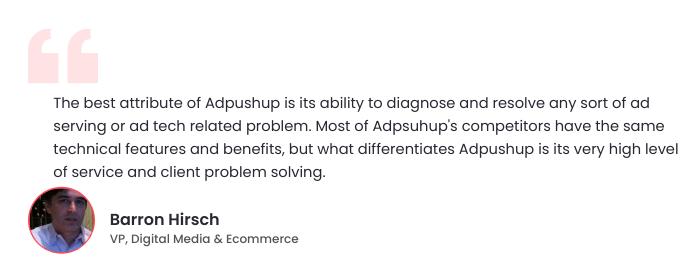Exact numbers on ad block usage for video are hard to come by, but YouTuber PewDiePie has gone on record to say that almost 40% of the subscribers to his channel are using ad block.
Video creators are feeling the heat, losing anywhere between 30-40% of their ad revenue, and this has prompted ad tech companies to innovate and find ways to circumvent ad blockers on the video format; one such commonly pitched solution is called server-side ad insertion.
What is Server-Side Ad Insertion?
Server-side ad insertion, also known as “dynamic insertion” or “ad stitching” is a technology that combines video content and ad content at the CMS level instead of on the level of the browser. This is not new technology, but recently there’s been a surge in interest because it can help video platforms and creators bypass ad blockers and decrease revenue loss.
So, How Does it Work?
Videos ad are typically inserted into video content based on real-time user targeting data.
Think about when you watch videos on YouTube, which uses client-side insertion—before the ad loads, there’s a small interruption while the content assets for the ad are fetched from the ad server—and then again before the video starts playing again.
This happens because the video content and the ad are separate media files that are sequenced together on the webpage for the user. In server-side ad insertion, this sequencing happens at the CMS level and the “stitched video” is presented to the user as a single stream.
How Does SSAI Counter Ad Blocking?
Most ad blockers work by scanning pages and using filter lists to block any requests from known third-party ad servers. This way publisher content gets loaded, but ad creatives are blocked. Since server-side ad insertion generates a single stream of video combining the video content and the advertisement before it is loaded on the webpage, no third-party ad server calls are made, and ad blockers have nothing to block.

Are there any Other Advantages?
Believe it or not, server-side ad insertion wasn’t originally created to counter ad blockers. The creators were trying to solve user experience problems related to video content delivery over the internet. For instance, combining video and advertising assets into a single stream eliminates scenarios where the ads load but the video does not. Ad stitching also reduces buffering by keeping the quality of the video uniform.
For a more thorough technical understanding of how server-side ad insertions works and its implementation, check out this White Paper on SSAI from Amazon and the help page about Dynamic Ad Insertion from Google Ad Manager.

Shubham is a digital marketer with rich experience working in the advertisement technology industry. He has vast experience in the programmatic industry, driving business strategy and scaling functions including but not limited to growth and marketing, Operations, process optimization, and Sales.







